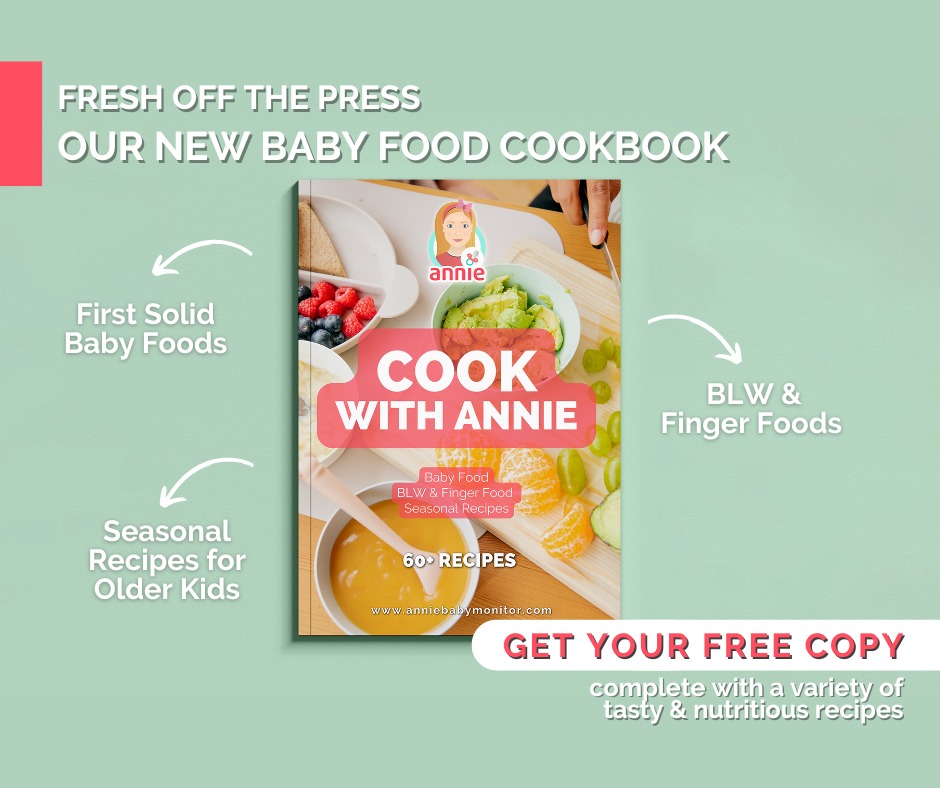
What Food To Try Baby and When
- Created:
13. 7. 2021 - Updated:
11. 12. 2023
With the first tooth, usually sprouting around the 6th month of the baby’s age, usually comes not only joy but also worry. Many children like to try their first teeth – for example by biting toys or carrots are great too.
Around the ninth/tenth month of the baby’s age, more teeth will be growth, nature thus makes it clear that it is time to start with the real food – that means the inclusion of pieces of solid food in baby food.
The American Academy of Pediatrics (AAP) says you should introduce solids between 4 and 6 months, but the answer depends on your baby. He might be ready if he exhibits the following signs:
- Sitting upright and holding up his head.
- Looking around himself curiously.
- Ability to swallow and loss of “tongue thrust” reflex (this prevents you from putting solid objects into your baby’s mouth).
- Seeming dissatisfied from milk alone.
What Food To Try
Berries 🍓
Babies eat with their eyes, just as grown-ups do, and what’s more beautiful than bright red strawberries or dusky blueberries? Serve small or chopped berries as finger foods, or blend them into a tasty puree .
🧐 Related:
- Pumpkin baby food ideas
- Avocado baby food ideas
- Apple baby food ideas
- Carrot baby food ideas
- Sweet potato baby food ideas
Salmon 🐟
Babies’ growing brains crave DHA, an omega-3 fatty acid that’s essential to cognitive development and salmon is full of these. Mash some cooked, flaked fish into a puree.
Peanuts 🥜
Recent guidance from the American Academy of Pediatrics (AAP), says that introducing babies to peanuts around 4 to 6 months of the baby’s age could actually prevent peanut allergies. Instead of giving your baby whole peanuts or a spoonful of peanut butter – both are choking hazards, put a little bit of peanut butter into a puree.
‼ Important: Peanut Allergies: What Concerned Parents Need to Know
Leafy Greens 🥗
Leafy green vegetables are an important part of health. They’re packed with vitamins, minerals, and fiber which is very important for a baby’s growth and development. Eating leafy greens can offer numerous health benefits including reduced risk of heart disease, high blood pressure, and mental decline.
Beef 🥩
If your family eats meat, don’t shy away from beef. Full of protein and zinc, it’s ideal early baby food. Serve it pureed on its own or mixed with potato, sweet potato, or a green vegetable puree.
Eggs 🥚
With six grams of protein, healthy fats, and choline for eye health, eggs are great baby food. And they’re also perfectly easy to prepare. Simply blend a scrambled egg with a vegetable puree, cut up an omelet as finger food, or chop a hard-boiled egg for easy eating.
Cheese 🧀
Whatever type of cheese you end up giving your baby, make sure it is pasteurized. Raw milk (and cheese made from raw milk) could be contaminated with listeria monocytogenes, a form of bacteria that can be fatal for infants. That means cheese like brie or feta is off-limits. All your cheese should also be full-fat as it is less processed and it is a healthy type of fat.
💡 TIP N.1: When Can Baby Eat Cheese and What Kind Is Best
Free Baby Food Recipe Book
Are you ready to start making some yummy and nutritious food for your little one?
We’ve got you covered!
Just download our Baby Food Cookbook and get started on a tasty journey of homemade meals that can help your baby grow and develop.
And the best part? It’s totally free!

Foods To Avoid
You should avoid giving infants the following foods:
- cow’s milk 🥛
- peanut 🥜
- egg 🥚
- fish 🐟
- soya 🌰
Baby food allergies are relatively common in children, and they can present themselves in several ways. Your feeding journey can become less stressful by recognizing the signs early and knowing what to do. We have created a definitive baby food allergies guide covering everything you need to know.
Examples of Appropriate Solid Foods Listed by Age:
6 months:
- Well-cooked and pureed meat, poultry or beans.
- Ground, cooked, single-grain cereal or infant cereal with breast milk or formula.
- Cooked and pureed vegetables.
- Mashed banana or avocado.
9 months:
- Well-cooked, minced or finely chopped meat, poultry or beans.
- A variety of cooked vegetables cut into small, ½ inch pieces, such as squash and green beans.
- Sliced and quartered bananas or small pieces of other soft fruits.
12 months:
- Soft, shredded meat, poultry or fish.
- Small pieces of cooked vegetables.
- Small pieces of soft, easy to chew fruits.
- Mixed food dishes the family is eating in appropriately sized pieces.
Not Recommended Food *
*Under 4 year of age risk of choking!
- Popcorn and whole kernel corn
- Nuts and seeds
- Large chunks of meat, poultry, and cheese
- Candy, gumdrops, and jelly beans
- Hard, raw fruits or vegetables such as apples, celery, and carrots
- Whole grapes and cherry tomatoes, unless cut into quarters
- Hot dogs, unless cut into strips and age appropriate, bite-size pieces
- Sticky foods, such as peanut butter, which can get stuck in the back of the mouth – peanut butter is okay if spread thinly on bread
Final Tip: Nourishing Your Baby’s Journey with Annie Baby Monitor
Starting your baby on new foods is a big moment in your parenting journey. To make it easy and stress-free, you can use the Annie Baby Monitor – track your baby’s feeding routines, diaper changes, and overall development.
With Annie Baby Monitor, you’ll always know how your baby is doing and if they’re getting the right nourishment they need to grow up healthy.
With its baby tracker feature, you’ll be able to guide your baby through the exciting world of new foods and keep track of your baby’s development.

























